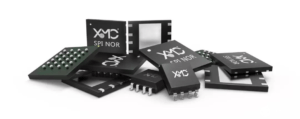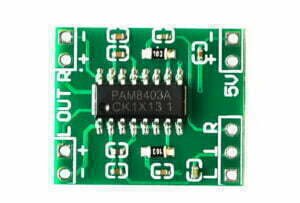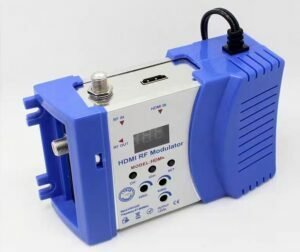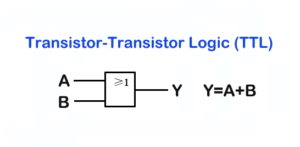Printed circuit boards, or PCBs, are a vital component of electronic devices, as they provide a platform for electrical components to be connected and communicate. To ensure that the PCBs are installed and laid out correctly, various markings are used to indicate where specific components should be placed. There are approximately 140 common PCB markings, each with its own distinct meaning. Understanding the purpose of these markings is essential to getting the most out of a PCB. With this knowledge, you can ensure that your PCB is laid out correctly and that all components are installed in the right places.
Meaning of the Different PCB Markings
| Letters Code | Meaning |
|---|---|
| AAT | automatic power-on device |
| AC | alternating current |
| DC | direct current |
| G | generator |
| HP | light plate |
| K | relay |
| KD | differential relay |
| KF | flasher relay |
| KH | thermal relay |
| KM | intermediate relay |
| KOF | export intermediate relay |
| KS | signal relay |
| KT | time relay |
| KV | voltage relay |
| KP | Polarization Relay |
| KR | Reed Relays |
| KI | impedance relay |
| KA | momentary relay |
| L | line |
| QF | circuit breaker |
| QS | isolation switch |
| T | Transformer |
| TA | current transformer |
| TV | voltage transformer |
| W | DC bus |
| PQS | active and reactive apparent power |
| EUI | electromotive voltage current |
| SE | experiment button |
| F | frequency |
| Q | circuit switching device |
| FU | fuse |
| FR | thermal relay |
| SB | push button switch |
| SA | transfer switch |
| PA | Ammeter |
| PV | Voltmeter |
| PJ | Active energy meter |
| PJR | Reactive energy meter |
| PF | Frequency table |
| PPA | Phase Meter |
| PM | Maximum Demand Meter (Load Monitor) |
| PPF | Power Factor Meter |
| PW | Active power meter |
| PR | Reactive power meter |
| PAR | Reactive ammeter |
| HA | Acoustic signal |
| HS | Optical signal |
| HL | Indicator light |
| HR | Red light |
| HG | Green light |
| HY | Yellow light |
| HB | blue light |
| HW | White light |
| XB | Connection piece |
| XP | Plug |
| XS | Socket |
| XT | Terminal board |
| WB | DC bus |
| WIB | Plug-in (feed) bus |
| WP | Power branch line |
| WL | Lighting branch line |
| WE | Emergency lighting branch line |
| WPM | Power mains |
| WLM | Lighting mains |
| WEM | Emergency lighting mains |
| WT | trolley line |
| WCL | Closing small busbar |
| WC | Control small busbar |
| WS | Signal small busbar |
| WF | Flash small busbar |
| WFS | Accident Sound Small Bus |
| WPS | Forecast audio small bus |
| WV | Voltage small busbar |
| WELM | Emergency Lighting Small Busbar |
| FTF | Fast Fuse |
| FF | Dropout fuse |
| FV | Voltage limiting protection device |
| C | Capacitor |
| SBP | Pressure switch |
| SBT | Test button |
| SBR | Reverse button |
| SBS | Stop button |
| SBE | Panic button |
| SC | Contactor |
| SG | Signal lamp |
| SL | Level switch |
| SM | Humidity control switch |
| SP | Pressure control switch |
| SQ | Limit switch |
| SQP | Proximity switch |
| SR | Reset button |
| SS | Speed control switch |
| ST | Temperature control switch auxiliary switch |
| SV | Voltmeter changeover switch |
| SW | Automatic transfer switch |
| T | Transformer |
| TBP | Pressure transmitter |
| TC | Thermocouple |
| TF | Temperature limiter |
| TG | Thermostat |
| TH | Heater |
| TM | Temperature transmitter |
| TR | Thermoresistance |
| TT | Temperature controller |
| U | Rectifier |
| UB | Uninterruptible power supply |
| UC | Converter |
| UI | Inverter |
| UR | Thyristor rectifier |
| US | Soft starter |
| UT | Step-down transformer |
| V | Frequency converter |
| VC | Control circuit with power rectifier |
| W | Cable |
| BV | speed changer |
| BT1BK | Time measuring sensor |
| BL | Liquid level sensor |
| BHBM | Temperature measurement sensor |
Tips for Reading PCB Markings
Reading the markings on a printed circuit board (PCB) can be daunting at first, but with some practice and basic knowledge of the symbols and codes used, it can become second nature. Here are some tips to help you get started:
Learn the basic symbols and codes
Familiarize yourself with the most common symbols and codes used on PCBs, such as component designators, polarity indicators, reference designators, and rating markings. Knowing these will help you understand the information on the board more easily.
Read the component labels
Component labels usually include a manufacturer’s part number, a description of the component, and the electrical characteristics of that component. This information will help you identify what type of component is installed on the board and its specifications.
Inspect the board closely
Take your time when inspecting the board to look for any signs of damage or corrosion. Look for any solder joints that may have been disturbed, and any components that may have been added or removed from the board. Learning how to identify and fix issues like cold solder joints can be very helpful.
Refer to the schematic
If you’re having trouble understanding the markings on the board, refer to the schematic to cross-reference the markings and make sure they match up. This can help you determine if there are any discrepancies between the board and the schematic.
Test the components
Once you’ve identified the components on the board, test them to make sure they’re working correctly. This will help you confirm that the board is functioning properly and is free of defects.
Read the markings from left to right
When reading a PCB marking, it is important to read the markings from left to right, as this will help to ensure accuracy. This is especially important when there are multiple components in a single line.
Look for additional information
In some cases, additional information may be included on the PCB markings. For example, the maximum voltage or current rating of a component may be included. It is important to look for this information in order to ensure that the component is suitable for its intended purpose.
Use a reference guide
If you are having difficulty interpreting a PCB marking, it can be helpful to consult a reference guide. A reference guide will provide detailed information about the various symbols and abbreviations used in PCB markings, as well as their meaning.





